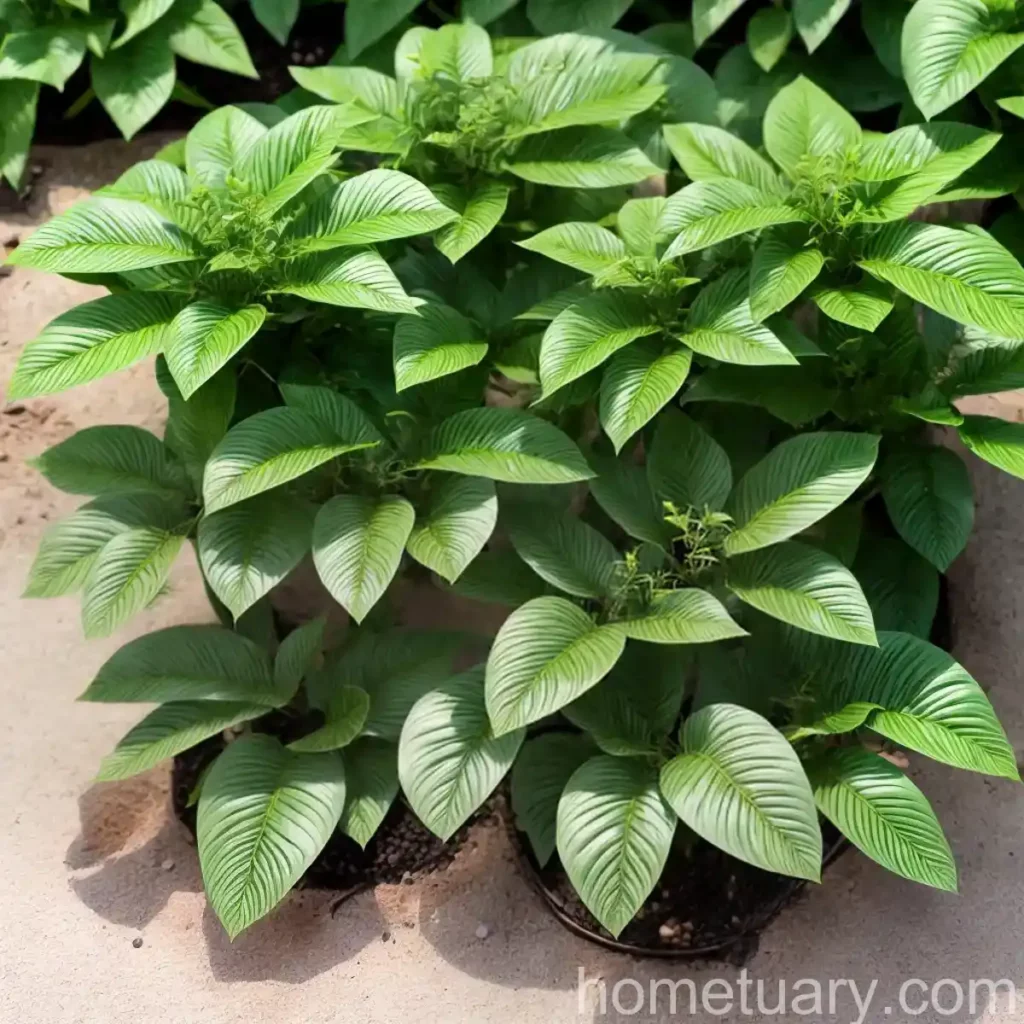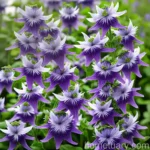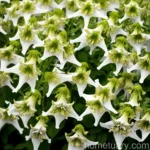Plant Name: “laurentia (Isotoma axillaris)”
What is plant laurentia (Isotoma axillaris)
Laurentia, scientifically known as Isotoma axillaris, is a delicate and charming herbaceous perennial plant that belongs to the Campanulaceae family. This lovely plant is native to Australia, where it’s commonly found in the coastal regions of New South Wales and Queensland. Laurentia is celebrated for its profusion of small, star-shaped flowers that adorn the plant, creating an enchanting display of color in gardens and landscapes. The plant is also commonly referred to as ‘Blue Star Creeper’ due to its striking, star-shaped blooms and its ability to spread and cover the ground like a starry carpet.
Key Takeaways – laurentia (Isotoma axillaris)
Dwarf stars of Laurentia
Laurentia, also known as Isotoma axillaris, features petite star-shaped flowers that create a captivating scene in gardens, making it an excellent choice for those seeking a delicate and elegant addition to their landscapes.
Isotoma axillaris care tips
Providing the appropriate conditions for optimum growth and flowering is essential when caring for Laurentia. The plant requires adequate sunlight, regular watering, and proper soil conditions to thrive.
Growing Laurentia in your garden
Laurentia makes an exquisite addition to garden beds, rockeries, and borders due to its low-growing habit and stunning blue flowers. It can also be used as a groundcover, creating a beautiful sea of blue in the landscape.
Laurentia plant varieties
There are different cultivars of Laurentia available, offering variations in flower color, foliage, and growth habits. Selecting the right variety can help in achieving the desired aesthetic and functional qualities for a specific garden or landscape design.
Isotoma axillaris as groundcover
The spreading nature of Isotoma axillaris makes it an excellent choice for use as a groundcover, especially in areas where its low, creeping growth habit can create a visually appealing and uniform carpet of blue flowers.
Culture
Uses
Laurentia (Isotoma axillaris) is a versatile plant with an array of uses in landscaping and gardens. Some of its primary uses include:
- Groundcover: The low-growing and spreading nature of Laurentia makes it an ideal groundcover, creating a charming blue carpet in garden beds and landscapes. Its ability to suppress weeds and provide a uniform, low-lying expanse of blooms makes it a popular choice for this purpose.
- Borders and Edging: The compact growth and delightful blossoms of Laurentia make it an excellent choice for defining borders and edges in garden beds, pathways, and along garden features.
- Rock Gardens: The starry blooms and low spread of Laurentia make it well-suited for rock gardens, where its delicate beauty can be showcased among rocks and pebbles.
- Container Planting: Laurentia can be grown in containers, hanging baskets, and window boxes, adding a touch of whimsy and color to small outdoor spaces and balconies.
Water
The water needs of Isotoma axillaris are relatively moderate, and the plant thrives in evenly moist soil. Adequate watering is crucial, particularly during the hot summer months, to ensure that the plant remains healthy and continues to produce its charming blooms. However, it’s important to avoid overwatering, as excessively waterlogged soil can lead to root rot and other issues.
Here are some key points to consider regarding watering Laurentia:
- Moist, Well-Draining Soil: Laurentia prefers soil that is consistently moist but well-draining. It’s essential to strike a balance to prevent waterlogging, which can be detrimental to the plant’s health.
- Summer Watering: During the hotter months, regular watering is necessary to keep the soil evenly moist. This is especially important for plants grown in containers, as they may dry out more quickly than those in garden beds.
- Avoiding Overwatering: While Laurentia enjoys consistent moisture, it’s important to prevent waterlogged conditions by ensuring that the soil has adequate drainage. This can be achieved by using well-draining soil mixtures and containers with drainage holes.
Sunlight
Laurentia thrives in locations with abundant sunlight, making it an excellent choice for sunny areas in the landscape. Adequate sunlight is essential for the plant to produce an abundance of its dainty, star-shaped flowers and maintain healthy, lush foliage. When positioning Laurentia in the garden or landscape, it’s important to consider its sunlight requirements to ensure optimal growth and flowering.
Key considerations for providing adequate sunlight to Isotoma axillaris include:
- Full Sun: Laurentia is ideally suited for locations that receive full sunlight, defined as a minimum of six hours of direct sunlight per day. When grown in such conditions, the plant will thrive and produce a profusion of blooms.
- Partial Shade: While Laurentia prefers full sun, it can tolerate some degree of light shade, particularly in regions with intense summer heat. In such areas, providing light afternoon shade can help protect the plant from excessive heat and sun exposure.
Fertilizer
Proper fertilization is essential for promoting healthy growth and abundant flowering in Isotoma axillaris. While the plant is relatively low-maintenance, providing it with the necessary nutrients can contribute to vigorous growth and an impressive display of blooms. When it comes to fertilizing Laurentia, it’s important to use a balanced, general-purpose fertilizer and apply it at the appropriate times for the best results.
Key points to consider regarding fertilizing Laurentia include:
- Balanced Fertilizer: A balanced, general-purpose fertilizer with equal parts of nitrogen, phosphorus, and potassium can be applied to Laurentia to support overall plant health and flowering.
- Spring Application: Fertilize the plant in early spring as new growth begins, providing it with the nutrients needed for vigorous development and the formation of flower buds.
- Avoid Overfertilization: While fertilization is beneficial for Laurentia, it’s important to avoid overfeeding the plant, as this can lead to excessive foliage growth at the expense of flowering.
Soil
Laurentia thrives in well-draining, moderately fertile soil that provides a suitable growing environment for the plant to flourish. It’s essential to prepare the soil appropriately when planting or transplanting Laurentia, ensuring that it offers the ideal conditions for the plant’s root development and overall growth.
Guidelines for selecting and preparing soil for Isotoma axillaris include:
- Well-Draining Soil: Laurentia prefers soil that is well-draining, preventing waterlogging and ensuring that the roots have access to oxygen. Amending heavy or clay soils with organic matter can improve drainage.
- Moisture Retention: While well-draining, the soil should also have the capacity to retain moisture, providing the plant with consistent access to water for healthy growth and flowering.
- Soil Testing: Before planting Laurentia, it can be beneficial to conduct a soil test to assess its pH and fertility. This information can guide soil amendment and fertilization to create an optimal growing environment for the plant.
Pruning
Proper pruning is important for maintaining the health, appearance, and productivity of Laurentia. While the plant is relatively low-maintenance, occasional pruning can help to rejuvenate the foliage, promote further blooming, and prevent the plant from becoming leggy or unkempt. Knowing when and how to prune Isotoma axillaris can contribute to its overall vitality and beauty in the garden or landscape.
Key points for pruning Laurentia include:
- Deadheading Spent Blooms: Removing faded flowers promptly can encourage the plant to continue blooming and prevent the development of seeds, redirecting the energy into new growth and blossoms.
- Rejuvenation Pruning: Periodically trimming back the foliage of Laurentia can help to rejuvenate the plant, stimulating fresh growth and promoting a compact, tidy appearance.
- Seasonal Pruning: Light pruning in early spring can help to tidy the plant after winter and encourage vigorous growth and flowering throughout the growing season.
Propagation
Propagating Laurentia (Isotoma axillaris) can be an enjoyable and rewarding endeavor, allowing gardeners to increase their stock of this delightful plant and share it with others. The plant can be propagated through several methods, including division, stem cuttings, and seed sowing, each offering its own benefits and considerations.
Methods of propagation for Laurentia include:
- Division: Dividing mature clumps of Laurentia in early spring can be an effective way to propagate the plant, creating new individuals that can be replanted in desired locations.
- Stem Cuttings: Taking stem cuttings from healthy, actively growing shoots of Laurentia and rooting them in a suitable growing medium can yield new plants that are genetically identical to the parent.
- Seed Sowing: Propagating Isotoma axillaris from seeds allows for the generation of new plants with potential variations in flower color and growth habits, providing an opportunity for selecting desirable traits.
Container Popularity
Laurentia (Isotoma axillaris) is a popular choice for container planting due to its low-growing habit, charming blue flowers, and adaptability to confined spaces. When grown in containers, the plant can brighten up small outdoor areas, such as balconies, patios, and decks, adding a touch of natural beauty and color to these spaces. In addition, its spreading nature makes it well-suited for filling the edges of containers and cascading over the sides, creating a delightful showcase of blue blooms.
When considering Laurentia for container planting, it’s important to provide the appropriate growing conditions, container size, and maintenance to ensure the plant’s success in this setting.
Key factors for growing Laurentia in containers include:
- Well-Draining Soil: Using a high-quality, well-draining potting mix is essential for container-grown Laurentia, as it helps to prevent waterlogging and provides the roots with the necessary aeration and moisture.
- Container Size: Selecting a suitable container size is important to accommodate the spreading growth habit of Laurentia. Larger containers can provide ample space for the plant to establish itself and thrive.
- Watering and Maintenance: Regular watering, monitoring for proper drainage, and occasional grooming are essential for maintaining healthy and attractive container-grown Laurentia.
Common Diseases
Laurentia (Isotoma axillaris) is generally resilient to diseases when provided with suitable growing conditions and proper care. However, it can be susceptible to certain issues, including fungal diseases, that can impact the plant’s health and appearance if not addressed promptly. Being attentive to preventive measures and promptly addressing any signs of disease can help in safeguarding the vitality and beauty of Laurentia in the garden or landscape.
Common diseases that may affect Laurentia include:
Powdery Mildew (Erysiphe sp.)
Powdery mildew can present as a powdery, white coating on the foliage of Laurentia, often leading to leaf distortion and diminished plant vigor. Warm, dry conditions with poor air circulation can contribute to the development of this fungal disease.
Preventive and Management Strategies:
– Providing adequate air circulation around the plant
– Avoiding overhead watering
– Pruning to improve airflow and remove affected foliage
– Fungicidal treatments in severe cases
Root Rot (Various pathogens)
Excessive soil moisture and poorly draining growing conditions can predispose Isotoma axillaris to root rot, which can lead to yellowing foliage, wilting, and overall decline in the plant’s health.
Preventive and Management Strategies:
– Using well-draining soil
– Watering appropriately to prevent waterlogging
– Promptly addressing any signs of root rot through appropriate measures, such as adjusting watering practices or applying fungicidal treatments if necessary
Disease diagnosis
Diagnosing and addressing diseases affecting Laurentia (Isotoma axillaris) requires a thorough examination of the plant, including observation of its overall appearance, foliage, and any signs of disease such as discoloration, wilting, or unusual growth patterns.
Key steps for diagnosing diseases in laurentia include:
- Visual Inspection: Carefully inspecting the plant for any abnormalities, discolorations, spots, or unusual growth habits can provide initial indications of potential diseases affecting the plant.
- Symptom Recognition: Identifying specific symptoms, such as powdery white growth on the foliage, yellowing, or wilting, can help in narrowing down potential diseases and determining appropriate management measures.
- Assistance from Professionals: Seeking guidance from local horticultural experts or plant health specialists can aid in accurate disease diagnosis and the development of a targeted management approach.
Common pests
Isotoma axillaris can attract various pests that may compromise the plant’s health and appearance if left unaddressed. Through proper monitoring and proactive pest management measures, it’s possible to mitigate the impact of these pests and safeguard the vitality of Laurentia in the garden or landscape.
Common pests that may affect Laurentia (Isotoma axillaris) include:
Aphids (Aphidoidea)
Aphids are small, sap-sucking insects that can congregate on the foliage of Laurentia, causing distorted growth, yellowing, and the development of sooty mold. They can multiply rapidly, particularly in warm and dry conditions.
Preventive and Management Strategies:
– Periodic inspection and monitoring for the presence of aphids
– Using insecticidal soaps or horticultural oils for control
– Encouraging natural predators, such as ladybugs, lacewings, and parasitic wasps, to help keep aphid populations in check
Snails and Slugs (Gastropoda)
Snails and slugs are known to feed on the foliage of Laurentia, leaving behind irregular holes and damage. They are commonly active during damp and mild conditions, posing a threat to the plant’s overall health.
Preventive and Management Strategies:
– Handpicking and removing snails and slugs from the vicinity of the plant
– Providing physical barriers, such as copper tape or diatomaceous earth, to deter these pests
– Using organic or commercial slug and snail baits in a strategic and safe manner
Spider Mites (Tetranychidae)
Spider mites are tiny arachnids that can cause stippling and discoloration on the foliage of Laurentia, often leading to a decline in plant vigor and overall health. They thrive in hot and dry conditions and can multiply rapidly.
Preventive and Management Strategies:
– Increasing ambient humidity around the plant to discourage spider mite infestations
– Using fine sprays of water to dislodge and reduce spider mite populations
– Applying horticultural oils or insecticidal soaps for control
Botanist’s tips
For successful cultivation and enjoyment of Laurentia (Isotoma axillaris) in the garden, it’s beneficial to consider some key tips and insights provided by botanists and horticultural experts. These recommendations can help enhance the growing experience and showcase the plant’s enchanting qualities to their fullest potential.
Botanist’s tips for growing and enjoying Laurentia in the garden include:
Selecting the Right Variety for the Desired Purpose: Consider the specific uses and design goals for Laurentia in the landscape, and choose an appropriate variety based on factors such as growth habit, flower color, and foliage characteristics.
Providing Adequate Drainage for Optimal Growth: Ensure that the soil provides proper drainage to prevent waterlogging, which can compromise the health of Isotoma axillaris. Amending the soil with organic matter and using well-draining containers can help achieve this.
Monitoring for Pests and Diseases: Regularly inspecting Laurentia for signs of pests and diseases and taking timely action can help prevent significant damage and maintain the plant’s health and beauty.
Planning for Seasonal Care: Consider the seasonal requirements of Laurentia, such as watering needs, fertilization, and pruning, to ensure that the plant receives appropriate care throughout the year.
Exploring Companion Planting Options: Deliberately selecting companion plants that complement Laurentia in terms of growth habit, foliage contrast, and flowering time can enhance the visual appeal of the planting area.
Fun facts
- Botanical Charm: The delicate star-shaped flowers of Laurentia (Isotoma axillaris) are not only visually captivating but also serve as a valuable resource for pollinators, attracting butterflies and other beneficial insects to the garden.
- Native Beauty: Isotoma axillaris is native to Australia, where it graces the coastal regions of New South Wales and Queensland with its natural splendor, adorning meadows, slopes, and rocky outcrops.
- Spreading Growth Habit: The low-growing and spreading nature of Laurentia makes it an excellent groundcover, capable of forming a sea of delicate blue flowers that create a mesmerizing effect in garden beds and landscapes.
Links to External Resources
For further information on laurentia (Isotoma axillaris), its culture, uses, and care, the following external resources can provide valuable insights and guidance:
- Royal Horticultural Society – Isotoma axillaris
- Gardening Australia – Blue Star Creeper
- University of Florida IFAS Extension – Blue Star Creeper
In conclusion, Laurentia, or Isotoma axillaris, is a captivating and versatile plant with many outstanding qualities that make it a valuable addition to gardens and landscapes. By understanding its culture, uses, care requirements, and the measures for addressing potential challenges, enthusiasts can enjoy the beauty and charm of Laurentia and create captivating displays of starry blue blooms in their outdoor spaces.
The comprehensive guide provides in-depth insights into the plant Laurentia (Isotoma axillaris), highlighting its cultural requirements, uses, and care considerations. From understanding the plant’s water and sunlight needs to exploring propagation methods and pest management strategies, the guide aims to equip plant enthusiasts with valuable information for successfully cultivating and enjoying this enchanting herbaceous perennial. Additionally, the inclusion of botanist’s tips, fun facts, and links to external resources enriches the content and offers a holistic perspective on the subject.














